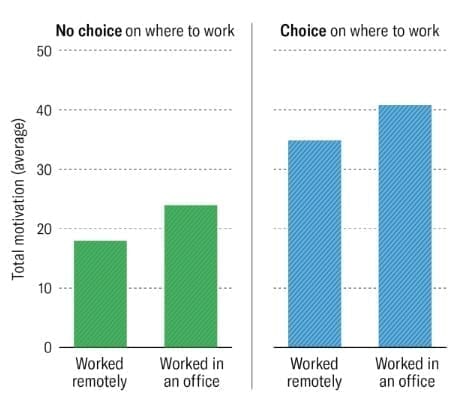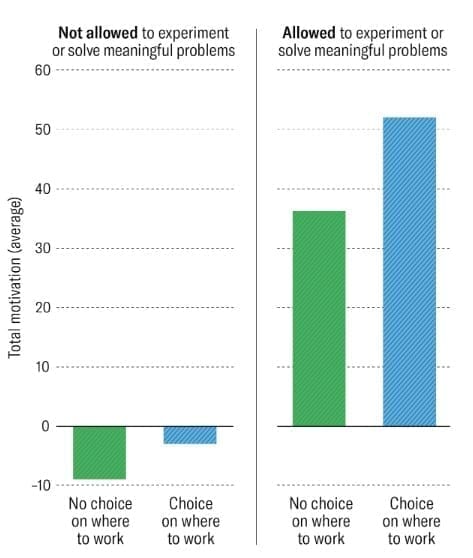How to Keep Your Team Motivated, Remotely
Many leaders have crossed the first hurdles of moving their teams remote: ensuring colleagues have set up their tech tools, defined their processes, and permanently logged into their video conference accounts.
But this is just the first step towards creating an effective work environment for remote employees. The next critical question we must ask is: How do you motivate people who work from home? Thankfully, West Coast Careers has found some answers for you.
This question is important now because, during crises such as COVID-19, people often tend to focus more on tactical work — answering the right number of tickets, or following the approved project plan — rather than adapting to solve the bigger, newer problems the business may be facing.
But some teams rise above the rest in times of turmoil, regardless of the challenges. They win market share, earn life-long customer love, and keep productivity high. In other words, they adapt. Though the research on remote productivity is mixed, with some saying it declines while others promise it increases, research suggests that your success will depend on how you do it.
First, it’s important to note that right now, working from home is likely to reduce motivation.
Between 2010 and 2015, Harvard Business Review surveyed more than 20,000 workers around the world, analyzed more than 50 major companies, and conducted scores of experiments to figure out what motivates people, including how much working from home plays into the equation.
When they measured the total motivation of people who worked from home versus the office, they found that working from home was less motivating. Even worse, when people had no choice in where they worked, the differences were enormous. Total motivation dropped 17 points, the equivalent of moving from one of the best to one of the most miserable cultures in their industries.

There are three negative motivators that often lead to reduced work performance. These have likely spiked in light of the coronavirus pandemic. Emotional pressure and economic pressure are soaring as people worry about losing their jobs, paying their rent, and protecting their health. The barrage of news, questions on how to safely get groceries, and fears for relatives are deeply distressing. Inertia for work is bound to increase as people wonder if there’s a point in even trying.
There are also three positive motivators that often lead to increased work performance. These motivators are in danger of disappearing in easy-to-miss ways during COVID-19. Play, the motive that most boosts performance, could decrease if it continues to becomes harder for people to get things done from home. For example, people may miss the joy of problem-solving with a colleague, or the ease of making a decision when everyone is in one room. Purpose could also decline with the team’s decreasing visibility into their impact on clients or colleagues, especially if no one is there to remind them. Lastly, potential could decline if people can’t gain access to colleagues that teach and develop them.
If business leaders don’t move to change this, shifts in people’s motivation will ultimately lead to a decline in adaptability, quality, and creativity just at the time when the post-cornavirus recovery will require productivity growth.
What Can Business Leaders Do?
For example, imagine a colleague of yours was diagnosed with cancer. Your first instinct might be to reduce their work so they could focus on their illness. To be sure, there might be times for 100% rest. But evidence shows that can quickly take away a major source of their play and purpose. Their work is a much-needed break from the anxiety-inducing news that person received each day.
This was also true for firms during the financial crisis. Analysts trying to shore up the markets had the highest motivation levels of their careers during 18-hour workdays. Interviewed military veterans talked about their highest-stakes days in the same way. For the same reasons today, you see that rather than sit at home, many citizens are organizing volunteer bike courier clubs. Fitness instructors are leading classes from their rooftops or streaming them for free online. Academics are running virtual classrooms and workshops with their students.
It’s important for leaders to follow suit and remember that work can deliver a much needed boost to their teams, even when there’s little choice involved in their work-from-home situation.
The key is resisting the temptation to make work tactical only through strict processes, rules, and procedures. While some degree of boundaries and guidelines help people move quickly, too many create a vicious spiral of demotivation. In such cases, people tend to stop problem-solving and thinking creatively, and instead, do the bare minimum.
If you want your teams to be engaged in their work, you have to make their work engaging. Find ways to make sure every single person on their teams feels like they have a challenge that they can help solve. In your own cases, this challenge can range from something as small as how to better greet customers or accommodate new schedules to something as big as moving your previously in-person business online.
The most powerful way to do this is to give people the opportunity to experiment and solve problems that really matter. These problems won’t be the same for every team or organization. They may not even be easy to identify at first. Your employees will need your help to do this. Ask them:
- Where can we deliver amazing service to our customers?
- What’s broken that our team can fix?
- What will drive growth even in a time of fear?
- Why are these problems critical, valuable, and interesting?
Today, we’re collaborating with teams across the globe that are seizing this way of working. A pharmaceutical company’s clinical trials team is experimenting with ways they can help hospitals prioritize trials and maintain safety during this crisis. Teams across the tech unicorn, Flexport, are generating ideas on how to ship critical goods around the world, keep their clients’ supply chains running, and share tips to keep their suppliers in business. An insurance company is testing ways to prioritize their skyrocketing internal chat volumes and process claims in timely ways. In the teams we work with, we’ve seen productivity remain high, and in some cases, improve.
Taking This Back to Your Teams
This all may sound great in theory, but if you’re wondering how to start, you’re not alone. Few organizations have been taught how to identify when and where it is OK to experiment with new ways of working — despite the fact that experimentation results in a 45-point increase in employee motivation.

Given today’s challenges with COVID-19, there’s a simple set of recommendations for teams who are working remotely.
First, what you measure is the single strongest signal to your people of what you care about. If you want to show them that you care about their motivation, you can measure it using Harvard’s online tool or using your own preferred survey tool. Then, have a discussion with them about what might be driving their motivation up or down, and what would be helpful to maximize their motivation and experimentation in the weeks to come.
You might ask questions like: How is the current situation affecting you at the moment? What tips do people have for how to motivate yourself and find play and purpose in the current environment? This is your time to listen and create a safe environment in which everyone can talk.
Second, make sure your weekly routines are not focused only on the tactical work. Half of your week should also be focused on adaptive performance, where there is no plan to follow, but instead, experimentation and problem-solving.
The following is a recommended simple rhythm for remote teams.
Monday: Hold a performance cycle meeting for the team that covers the following.
- What impact did we have last week and what did we learn?
- What commitments do we have this week? Who is on point for each?
- How can we help each other with this week’s commitments?
- What are the areas where we should experiment to improve performance this week?
- What experiments will we run, and who is on point for each?
Tuesday-Thursday: Have at least one individual meeting with each of your team members. To help motivate your employees, focus on helping them tackle challenges that are a slight stretch. You can also coordinate small group meetings in which employees can collaborate on the week’s experiments and tackle problems together.
Friday: Focus on reflection. Showcase and gather input on the experiments of the week. This might include presentations from project groups during which team members share metrics and insights. It’s also important to check in on each other’s motivation and progress. As the leader, set the example by asking people how they are feeling:
Where did they struggle with their motivation, and where did they thrive?
This approach works because it was used during the financial crisis. When most financial services teams were doubling down on rules and processes, Harvard helped thousands of people working in mortgage and home equity shops identify the problems they could solve, innovate, and adapt. Their motivation skyrocketed, and they outperformed the status quo by 200%, finding creative win-win solutions for the financial institutions they worked at and the customers who were in danger of losing their homes.
As we saw in 2008, it is possible for teams to experiment and adapt. We also saw that it is possible for teams to freeze under pressure and recede. Make it your mission to achieve the former and achieve greater levels of growth and productivity as a remote team than as an in-person team. This is a challenge that can keep you energized and experimenting long after this crisis is behind us.
This week’s blog post comes from Harvard Business Review – written by Lindsay McGregor and Neel Doshi.

